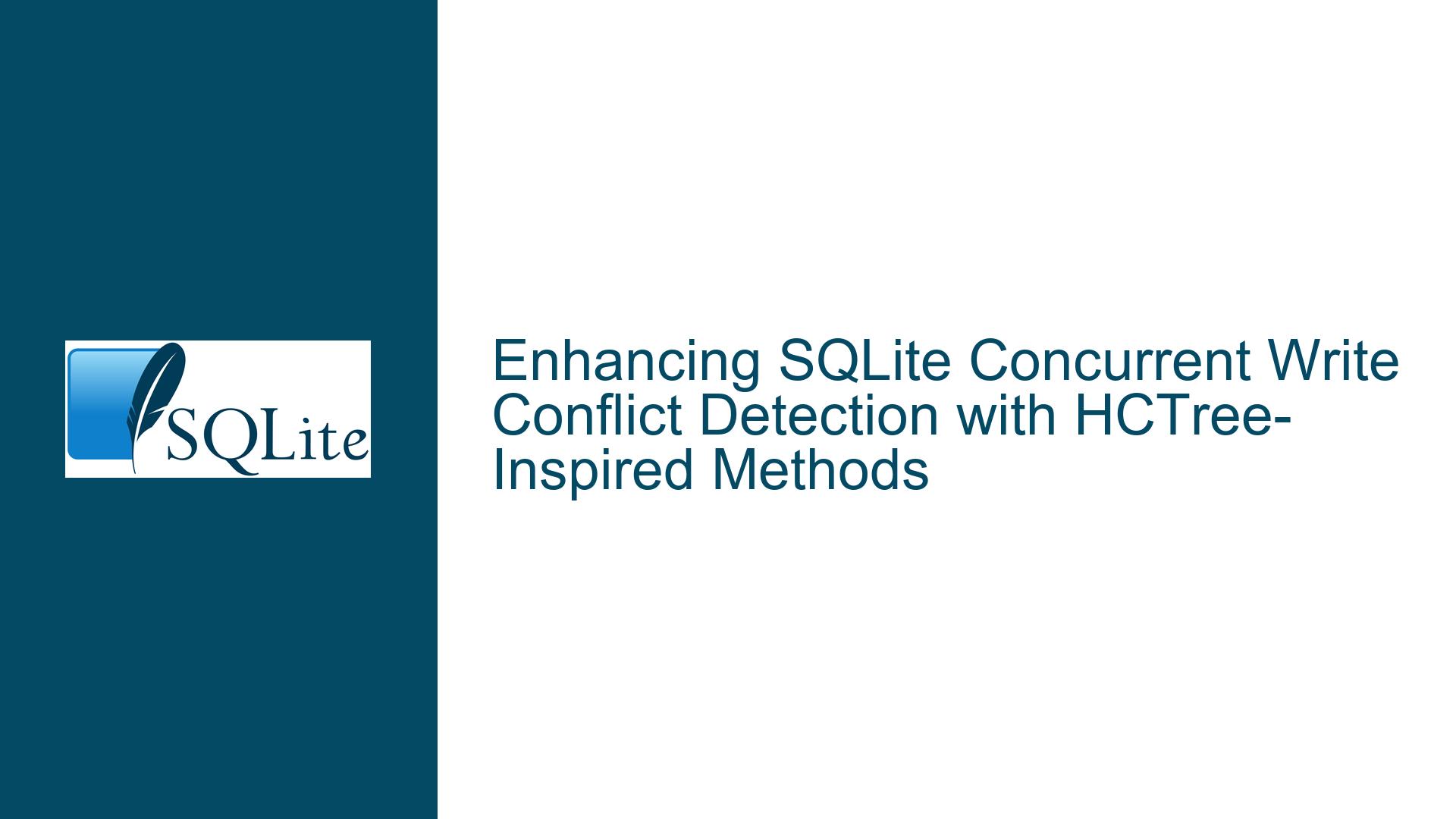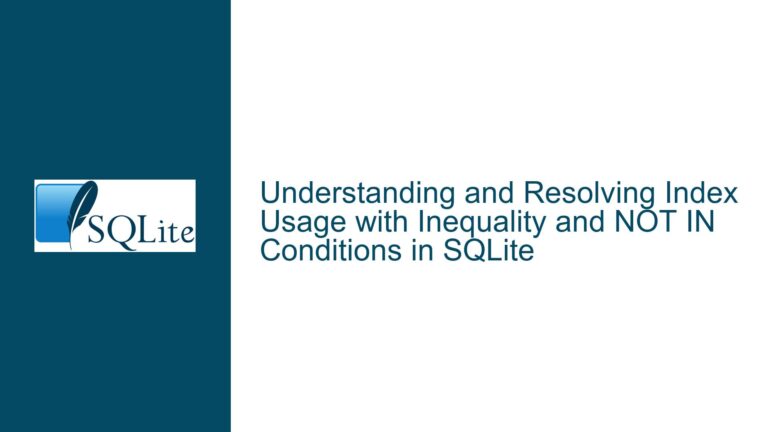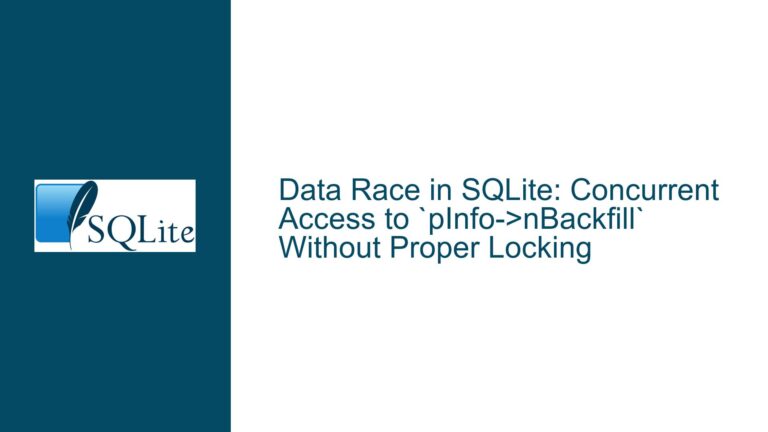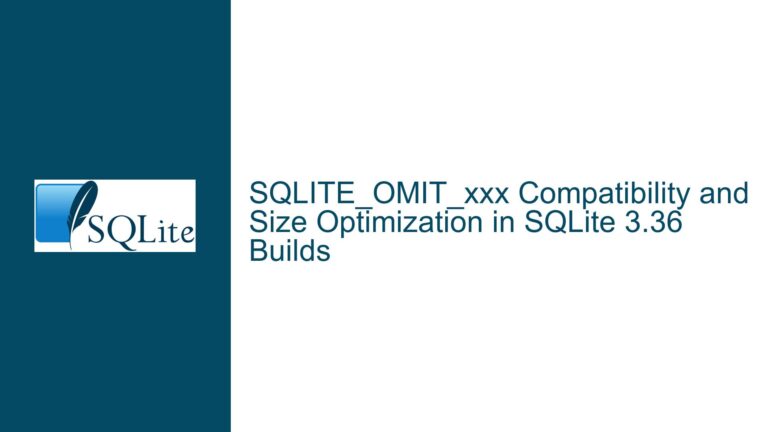Enhancing SQLite Concurrent Write Conflict Detection with HCTree-Inspired Methods
Challenges in Implementing Finer-Grained Conflict Detection for BEGIN CONCURRENT Transactions
SQLite’s BEGIN CONCURRENT feature provides a mechanism for allowing multiple writers to operate on the same database concurrently, reducing contention compared to traditional exclusive write locks. However, its current conflict detection operates at the page level, which can lead to false positives where transactions are aborted even when their actual modifications do not overlap. The discussion explores the feasibility of integrating finer-grained conflict detection inspired by SQLite’s experimental HCTree engine. This approach would involve tracking conflicts at the row or key-range level rather than entire database pages, potentially improving concurrency. The technical hurdles, trade-offs, and implications of such an enhancement are central to understanding why this feature has not yet been adopted and how it might evolve alongside HCTree.
Technical Limitations and Overheads of Page-Level vs. Row-Level Conflict Resolution
The primary barrier to implementing finer-grained conflict detection in SQLite’s existing BEGIN CONCURRENT infrastructure lies in fundamental architectural differences between SQLite’s traditional B-tree storage and HCTree’s design.
Absence of Transaction ID (TID) Metadata in Standard SQLite Tables
HCTree assigns a unique Transaction ID (TID) to every row modification. During transaction validation, HCTree checks whether any new TIDs (from concurrent commits) intersect with the ranges of data accessed by the current transaction. This allows precise identification of conflicting modifications. In contrast, standard SQLite tables lack TID metadata. Without this, detecting row-level conflicts requires reconstructing the state of the database at the time the transaction began, which is computationally expensive. For example, if a row is inserted and later deleted by another transaction, SQLite’s page-level tracking would flag a conflict, but finer-grained analysis would need to determine whether the deleted row overlaps with the current transaction’s data ranges.In-Memory Page Modifications and Merge Complexity
UnderBEGIN CONCURRENT, transactions modify database pages in memory. If a page-level conflict is detected but resolved via finer-grained analysis (e.g., determining that conflicting rows do not overlap), SQLite would need to merge the in-memory changes of the current transaction with the newly committed changes from other transactions. This merging process is non-trivial, as it would require re-applying inserts, updates, and deletes to the updated pages. HCTree avoids this by decoupling transaction validation from page modifications, but retrofitting this behavior into SQLite’s existing B-tree implementation would introduce significant complexity and performance overhead.Overhead of Maintaining and Querying Range Metadata
Tracking accessed ranges for every transaction adds memory and CPU costs. For large databases, maintaining these ranges could exacerbate page faults during the validation phase, particularly if the working set exceeds available RAM. While HCTree optimizes this through its append-only structure, SQLite’s mutable B-tree pages make similar optimizations challenging.
Strategies for Balancing Concurrency, Performance, and Stability
Leverage HCTree’s Design Principles Without Direct Integration
Until HCTree is production-ready, applications requiring high concurrency can adopt schema and query patterns that mimic its advantages. For example:- Explicit Versioning Columns: Add a
versioncolumn to tables, incremented on each update. Transactions can check these versions during commits to detect conflicts. - Logical Partitioning: Split data into shards or partitions that reduce overlap between concurrent transactions. Combined with
ATTACH DATABASE, this can isolate write contention. - Application-Managed Locking: Use auxiliary tables or external locks (e.g., advisory locks in WAL mode) to enforce critical section logic for overlapping key ranges.
- Explicit Versioning Columns: Add a
Optimize Page-Level Conflict Detection
While page-level detection is coarse, its efficiency can be maximized:- Reduce Page Density: Design schemas and indexes to minimize the number of rows per page. For instance, using
INTEGER PRIMARY KEYautoincrementing IDs ensures sequential writes, reducing page splits. - Monitor
sqlite3_stmt_scanstatus_v2: Identify queries that scan large page ranges and optimize them to use covering indexes, thus narrowing the pages they touch.
- Reduce Page Density: Design schemas and indexes to minimize the number of rows per page. For instance, using
Evaluate Hybrid Approaches
For specific workloads, combineBEGIN CONCURRENTwith application logic:- Deferred Constraint Checks: Perform preliminary conflict checks in the application layer using
SELECT ... FOR UPDATE-style patterns (viaBEGIN IMMEDIATEon a separate connection). - Probabilistic Validation: Use bloom filters or hash summaries of modified rows to approximate conflict detection before committing.
- Deferred Constraint Checks: Perform preliminary conflict checks in the application layer using
Long-Term Alignment with HCTree Development
HCTree’s TID-based conflict resolution is inherently more scalable for concurrent writes. Developers should:- Monitor SQLite’s Experimental Branches: Track progress on
begin-concurrent-reportand HCTree for adoption timelines. - Contribute to Testing: Provide feedback on performance and edge cases to the SQLite team if using experimental builds.
- Monitor SQLite’s Experimental Branches: Track progress on
Mitigate Merge Overheads Through Caching
If finer-grained detection is implemented, use in-memory caches to store intermediate transaction states, reducing the need to reapply operations during merges. For example, a write-ahead log of row-level changes could be maintained per transaction, allowing selective replay on updated pages.Benchmarking and Profiling
Use tools likesqlite3_stmt_scanstatus_v2and thesqlite3_analyzerutility to profile page access patterns. This data can inform whether the overhead of maintaining range metadata is justified for a given workload.
By understanding the architectural constraints of SQLite’s storage engine and the innovative approaches proposed in HCTree, developers can make informed decisions about concurrency strategies today while preparing for future enhancements. The path to finer-grained conflict detection involves balancing immediate optimizations with long-term investments in SQLite’s evolving concurrency model.






